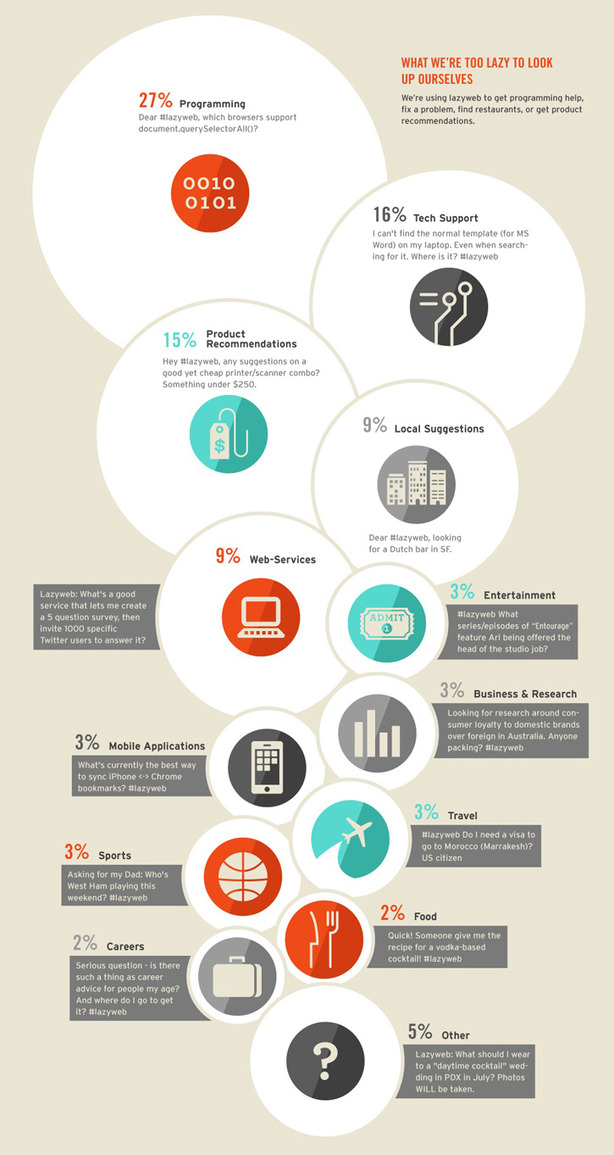Infographic: Twitter, Lazyweb Expose the Limits of Google
"The term lazyweb has been used to describe the act of outsourcing questions to people online, particularly when the people asking are admittedly too lazy to research themselves (think: bloggers to their readers, everyone else to all their friends)," explains a new infographic created by Column Five Media and Inbox Q. "With Twitter, people around the world are asking #lazyweb what they don't want to Google."
The lazyweb hashtag is rarely used anymore -- it peaked in 2008 and has been declining with increasing rapidity over time -- but people still turn to Twitter when they want to outsource a question. Or get a product recommendation. Or decide what restaurant to visit when driving through an unfamiliar town.
Fast Company's Cliff Kuang argues that this phenomenon highlights what it is that traditional search technology just doesn't do very well. If it did, people wouldn't turn to Twitter (or other Web-based outlets for answering questions and receiving recommendations). For some things, the human mind is still better than a computer. Most often, Kuang argues -- and this infographic supports -- those things are "situations where context, personal taste, and semantics play a big role." But other companies are working on changing that.
Infographics are always a bit of a hodgepodge of statistics culled from a variety of sources. Here, we sort through the clutter and pull out some of our favorite facts and figures:
- About 72 tweets per day include a lazyweb reference. Nearly 70 percent of those are actually questions.
- Lazyweb usage on Twitter peaked in 2008 and is expected to decline even more this year compared to last. Are people not as lazy anymore?, the infographic asks. Probably not. Tens of thousands of questions are asked on Twitter each day, but far fewer contain references to lazyweb today.
- People with high follower accounts are overwhelmingly more likely to use lazyweb -- and receive answers.
- Lazyweb is used to get programming help (27 percent of references; 16 percent for tech support), fix a problem, find restaurants and more. Nine percent of lazyweb references are asking for local suggestions, 15 percent for product recommendations and another nine percent for Web-services.
Check out more Infographics on the Technology Channel.

